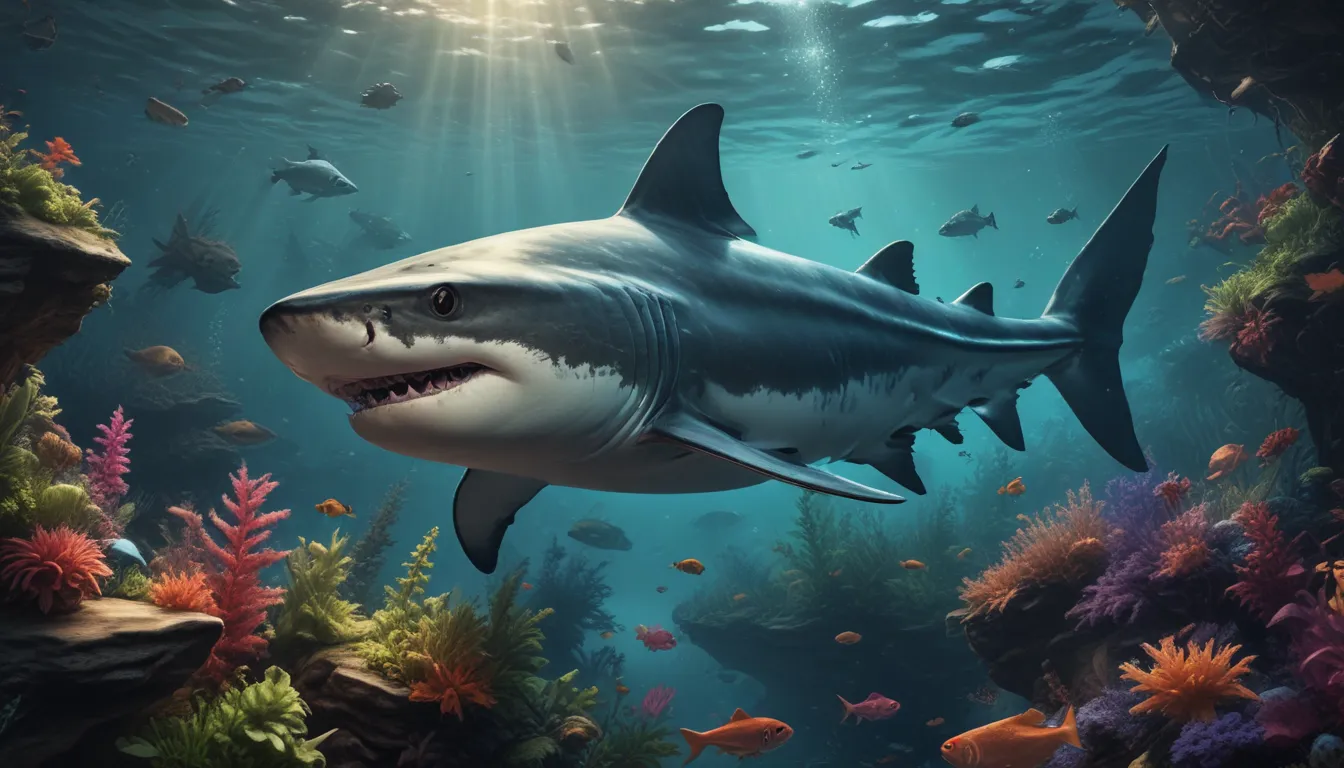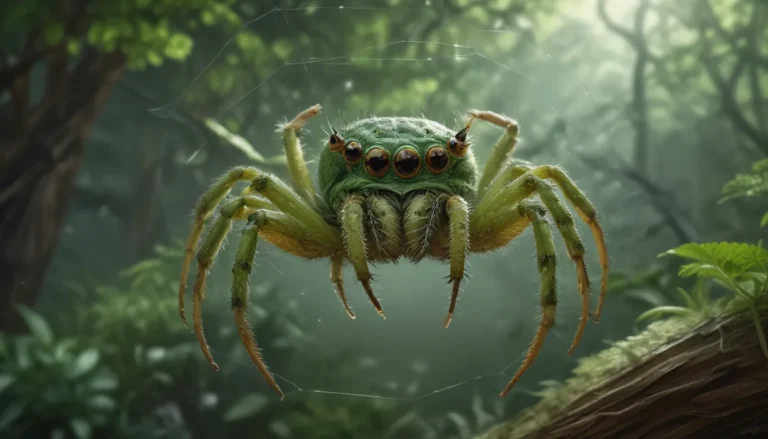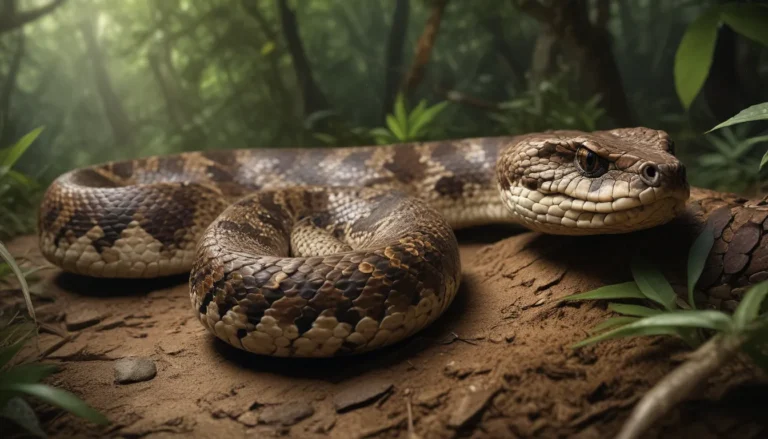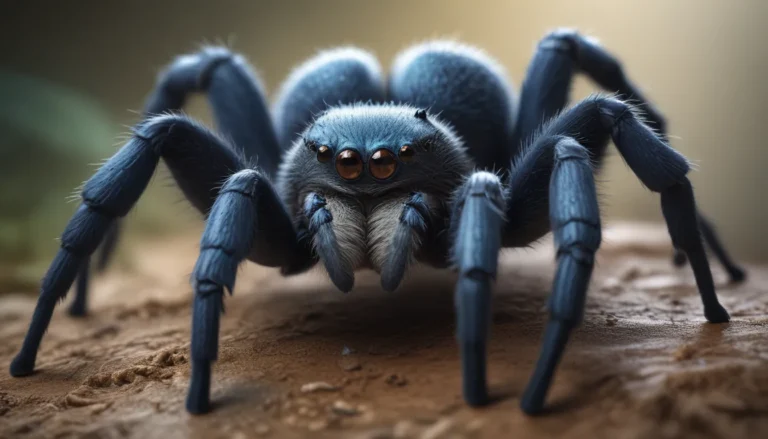The pictures we use in our articles might not show exactly what the words say. We choose these pictures to make you interested in reading more. The pictures work together with the words but don’t take their place. The words still tell you the important facts.
Are you curious about the mysterious creatures that roam the deep waters of oceans worldwide? Let's take a fascinating journey into the realm of catsharks, where we will uncover 19 intriguing facts about these captivating sharks. From their unique characteristics to their vital role in marine ecosystems, catsharks are sure to capture your imagination and leave you in awe of the wonders of the underwater world.
Key Takeaways:
- Catsharks are a diverse family of sharks with over 160 species found worldwide. Their distinct features, including cat-like eyes and unique markings, make them intriguing creatures to study and protect. These gentle predators play a crucial role in regulating prey populations in the deep sea, thanks to their exceptional hunting skills and sense of smell.
Catsharks: The Enigmatic Ocean Dwellers
Catsharks, belonging to the family Scyliorhinidae, are a diverse group of sharks comprising over 160 different species. These fascinating creatures can be found in oceans across the globe, ranging from shallow coastal waters to deep-sea habitats.
The Eyes of a Cat: Distinctive Features of Catsharks
Catsharks are named for their striking resemblance to cats, especially in their large, round eyes with vertically elongated pupils. This unique attribute allows them to see clearly in low light conditions, making them efficient hunters even in the darkness of the ocean depths.
Size Matters: Variability in Catshark Sizes
While most catsharks are small to medium-sized sharks, typically measuring between 1 and 4 feet in length, some species can grow up to 6 feet long. From the tiny dwarf catshark at 6-9 inches to larger species, catsharks exhibit a wide range of sizes in the shark world.
Camouflage Masters: Markings of Catsharks
Catsharks boast a unique pattern of dark spots and bars on their bodies, aiding in camouflage against the ocean floor. This intricate marking pattern varies between species, providing them with a natural defense mechanism to evade both predators and prey.
Gentle Giants: Catsharks and Human Interaction
Unlike some shark species known for aggression, catsharks pose no threat to humans. With their docile and shy nature, these sharks tend to avoid confrontations and are even kept as pets in home aquariums due to their calm demeanor.
The Nose Knows: Exceptional Sense of Smell
Catsharks are equipped with highly developed olfactory organs, giving them an excellent sense of smell to detect food from a distance. Their ability to detect even minuscule amounts of scent in the water helps them locate prey efficiently.
Masters of Stealth: Finding Hidden Prey
Using sensory cells on their snout called ampullae of Lorenzini, catsharks can detect electric fields generated by potential prey hidden in the sand or burrowing in the ocean floor. This unique ability enables them to locate and capture their food with precision.
Egg-citing Reproduction: The Oviparous Nature of Catsharks
Most catshark species reproduce through oviparity, laying protective egg cases known as "mermaid's purses" containing a single embryo. These egg cases provide a safe environment for the developing shark until it hatches, showcasing a remarkable reproductive strategy.
Slow and Steady Growth: The Life Cycle of Catsharks
Catsharks exhibit a relatively slow growth rate compared to other shark species, taking several years to reach maturity and reproduce. This slow progression contributes to their vulnerability to overfishing and emphasizes the importance of conservation efforts.
Bottom Dwellers: Habitat Preferences of Catsharks
Most catsharks are benthic species, residing near the ocean floor in rocky or coral reef habitats where they can find shelter and prey on small fish, crustaceans, and mollusks. Their preference for bottom-dwelling habitats shapes their unique ecosystem roles.
Illuminating Secrets: Bioluminescence in Some Catsharks
Certain catshark species, like the swellshark, possess the fascinating ability to produce a glowing blue-green light known as bioluminescence. This remarkable adaptation may serve purposes such as attracting prey or communicating with other sharks in the deep sea.
Ageless Wonders: Longevity of Catsharks
Many catshark species boast long lifespans, with some individuals living up to 30 years or more in the wild. Their slow growth rate and low reproductive output contribute to their extended longevity, making them ageless wonders of the ocean.
Conservation Concerns: Protecting Catsharks
Due to their slow reproductive rate and popularity in the aquarium trade, catsharks are vulnerable to overfishing. Maintaining sustainable fishing practices and implementing conservation measures are critical to safeguarding their populations and preserving marine ecosystem balance.
Masters of Disguise: Hiding Behaviors of Catsharks
Catsharks have evolved unique hiding behaviors to blend seamlessly with their surroundings. By tucking their pectoral fins close to their bodies and curling their tails, they effectively camouflage themselves and evade predators in their ocean habitats.
Powerful Tools: Specialized Teeth of Catsharks
Equipped with slender, pointed teeth, catsharks possess ideal tools for grasping and holding onto their prey. These specialized teeth enable them to feed on a variety of small marine organisms, showcasing their adaptability as skilled hunters.
Streamlined Swimmers: Body Shapes of Catsharks
Catsharks exhibit sleek and elongated body shapes that allow them to navigate through the water with agility and efficiency. Their streamlined form aids in energy conservation during swimming activities and enables swift movements in pursuit of prey.
Surviving Adversity: Adaptation to Low-Oxygen Environments
Some catshark species demonstrate the ability to tolerate low oxygen levels in the water by slowing down their metabolic rate and conserving energy until oxygen levels improve. This adaptation allows them to thrive in challenging environmental conditions.
Sensory Detectives: The Lateral Line System of Catsharks
Catsharks possess a sophisticated sensory system called the lateral line, running along their sides and sensitive to changes in water pressure. This sensory organ enables them to detect movements and vibrations in their surroundings, showcasing their sensory prowess.
Guardians of the Sea: Importance of Catsharks in Marine Ecosystems
As predators at the lower end of the food chain, catsharks play a vital role in regulating populations of prey species and maintaining a healthy balance in marine ecosystems. Their presence contributes to the overall health and stability of underwater habitats.
Conclusion: Celebrating the Marvels of Catsharks
Catsharks are enchanting creatures that inhabit the depths of the ocean, each with a unique story to tell. From their fascinating features to their pivotal role in marine ecosystems, these gentle predators deserve our admiration and protection. Let's continue to explore and appreciate the wonders of the underwater world, with catsharks as our guiding companions on this oceanic adventure.
FAQs About Catsharks:
-
Q: What is a catshark?
A: Catsharks are a type of shark belonging to the family Scyliorhinidae, known for their cat-like eyes and slender bodies. -
Q: How big do catsharks grow?
A: Most catshark species are relatively small, with adults typically ranging from 1 to 3 feet in length. -
Q: Where are catsharks found?
A: Catsharks can be found in oceans worldwide, with a preference for temperate and tropical waters. -
Q: What do catsharks eat?
A: Catsharks have a varied diet consisting of small fish, squid, crustaceans, and other marine invertebrates. -
Q: Are catsharks dangerous to humans?
A: Catsharks are generally not considered a threat to humans, as they are shy and docile creatures rarely encountered by swimmers or divers. -
Q: Do catsharks have any unique adaptations?
A: Yes, catsharks have the ability to curl up into a ball, serving as a protective mechanism against predators and aiding in ambush predation. -
Q: What is the lifespan of a catshark?
A: Catsharks exhibit slow growth rates and can live for several decades, with certain species known to reach ages of up to 20 years or more. -
Q: Are catsharks endangered?
A: While some catshark species face population declines due to overfishing and habitat loss, not all are considered endangered. Conservation efforts are crucial for protecting these remarkable creatures. -
Q: Can catsharks be kept as pets?
A: Catsharks are not recommended as pets for home aquariums due to their specific requirements in terms of tank size, water quality, and diet. -
Q: Are there any interesting facts about catsharks?
A: Yes, catsharks possess bioluminescent properties, emitting a faint blue or green light that aids in communication and camouflage in their deep-sea habitats.
Explore the endless wonders of our oceans and delve deeper into the enchanting world of catsharks. Let their captivating presence inspire you to discover more about the diverse marine life that surrounds us. From the smallest creatures to the grandest predators, the ocean is teeming with mysteries waiting to be unveiled. Join us on this exploration of the deep sea, where every dive reveals a new marvel and every encounter with a catshark is a reminder of the beauty and resilience of marine life.
Was this page helpful?
Our commitment to delivering trustworthy and engaging content drives us to provide you with valuable insights and information. Every fact shared on our site is contributed by real users like you, ensuring a diverse and credible repository of knowledge. With our dedicated editors meticulously reviewing each submission, you can trust that the facts we offer are both fascinating and reliable. Join us in our quest for quality and authenticity as we continue to explore, learn, and share together.






